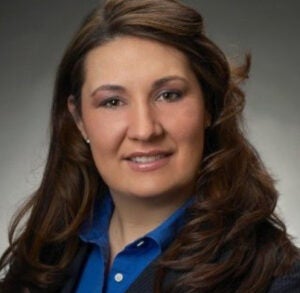 WBEZ’s “This American Life” spinoff, “Serial,” shattered the iTunes record for the fastest podcast to reach 5 million downloads. From its October premiere through Jan. 1, the episodes were downloaded 31 million times.
WBEZ’s “This American Life” spinoff, “Serial,” shattered the iTunes record for the fastest podcast to reach 5 million downloads. From its October premiere through Jan. 1, the episodes were downloaded 31 million times.
But for “Serial,” the sleeper winner was email marketing solutions provider MailChimp, the podcast’s sponsor whose brand went viral thanks to the show’s popularity.
“What made ‘Serial’s’ creative so effective for MailChimp is the way it was baked into the production standards of the program itself,” said Scott Davis, NPR’s SVP of sales, “which makes the sponsored message that much more authentic.”
MailChimp did not respond to inquiries about increases in sales post-“Serial.” But the podcast’s success has generated sponsorship interest. “This American Life” operations director Seth Lind told Ad Age in a December interview that, as the show’s popularity grew, NPR added more sponsors toward the end of the season.
Other digital audio content companies are feeling positive reverberations. Spotify, for one, is jazzed by the current podcast frenzy and how it could influence a more diverse range of advertorial sponsors.
“’Serial’ made this type of content, and the sponsorship of this type of content, much more mainstream,” said Spotify Chief Business Officer Jeff Levick. “If you look at the type of advertisers who’ve traditionally played in this space, it’s the progressive, web-type advertisers. It’s not the Coca-Colas and McDonald’s of the world.”
He added that “Serial” has raised awareness about the different types of content accessible via mobile devices.
“It will be interesting to see if the larger, traditional brands that play in the offline and online space start to put more attention to this type of content,” he said.
As it stands, there are more direct-response advertisers playing in the podcast space than there are traditional brand advertisers, said Erik Diehn, VP of business development at Midroll Media/Earwolf, an intermediary ad rep firm that sells integrated native ads for podcasts.
Midroll works with podcasts like “Nerdist,” “Startalk with Neil deGrasse Tyson” and “WTF With Marc Maron,” pairing them up with advertisers. But given the state of the market, Diehn said about 60% of Midroll’s business is with direct-response advertisers.
Traditionally, brands avoided spending in podcasts because they hadn’t mastered the metrics and best practices around advertising in the medium.
“If you’re a brand advertiser, there’s no equivalent in the podcast space of an AQH [average quarter-hour persons], or some way to very systematically do a buy,” said Diehn. “The metrics are still evolving, so a lot of brand advertisers are still getting comfortable with the medium. But that’s certainly changing, especially because of ‘Serial.’”
Direct-response advertisers use more sophisticated metrics than brand advertisers, added Diehn, with promotion codes, specific URLs and other tools, which is why they’ve adapted to podcasts more rapidly.
Nevertheless, limitations around targeting and measuring persist.
The podcast medium theoretically sits at the intersection of targeting and technology. But while there’s basic data around audience preferences, NPR’s Davis points out that digital audio at this point doesn’t really provide any unique insights that can’t be gathered from terrestrial audio.
“The application of data is simply to understand our audiences across various platforms,” he said.
Terrestrial radio restrictions around what can and cannot be said in advertising spots make underwriting in public radio a challenge, especially when it comes to targeted messaging. And because podcasts are distributed across a variety of channels, restrictions vary from one channel to the next.
But individual platforms can add targeting capabilities based on location and other data. This is where real-time targeting could come into play, if local ad buyers begin to shift ad dollars from radio over to podcasts, suggested Diehn.
However, the dominant player in podcast distribution is Apple, and Diehn points out that it isn’t really interested in ad monetization.
“Standards are still evolving so there’s not the same rush to deal with the infrastructure for targeting and RTB. It’s still very much a high-touch, human sales process right now,” he added. “As the medium grows, that will certainly change.”
Perhaps the hype around “Serial” will inspire more brands to buy in, which will advance metrics and targeting in the digital audio space. Certainly those flirtations are beginning.
“We were seeing increasing interest from larger traditional brand advertisers before ‘Serial,’” Diehn said. “When ‘Serial’ came out, it changed the perception of the medium and made a lot of people who hadn’t taken notice pay attention to podcasts.”
The second season of “Serial” paid for itself through a sponsorship and donation-based fundraising campaign before the first season ended. But Levick said he suspects it’s unlikely NPR secured that funding as quickly as it did without the financial backing of brands. (NPR wouldn’t comment on the show’s second-season sponsors).
“I would expect that we’ll see a lot more and a variety of brands bookending season two,” he guessed.
And late last week, NPR debuted another podcast called “Invisibilia.”
Because the concept for “Invisibilia” predated “Serial” by several months, Davis couldn’t link “Invisibilia” sponsorship inquiries to “Serial’s” popularity. But he said sponsors include Trunk Club, Arizona State University and Quantcast.
“We had sponsorship inquiries from people who were interested in the space and emerging digital audio opportunities,” said Davis. “With interest from online retailers, education services and data firms, it really spans a range of verticals.”














